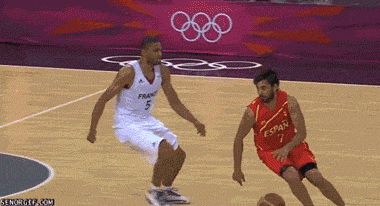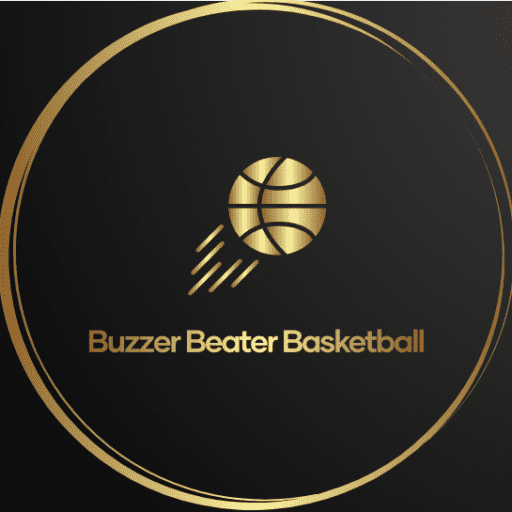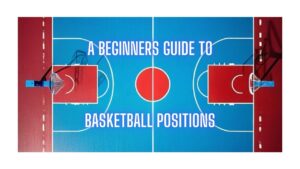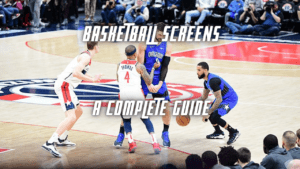Understanding Basketball Rules: Common Fouls and Violations Explained
In the realm of basketball, rules serve as the backbone of fair play and sportsmanship. Among the most critical aspects are fouls and violations, which can significantly impact the flow and outcome of the game. This comprehensive guide aims to delve deeper into the intricate nuances of basketball rules, focusing specifically on common fouls and violations and providing a thorough understanding for players and enthusiasts alike.
Personal Fouls: Unraveling the Anatomy of In-Game Contact
What Constitutes a Personal Foul?
The ramifications of personal fouls in basketball are multifaceted and can significantly impact both individual players and the overall outcome of the game. When a personal foul is committed, several consequences may follow:
- Free Throws: One of the immediate repercussions of a personal foul is that the fouled player or team is awarded free throws. Depending on the situation, the number of free throws awarded can vary, potentially leading to easy scoring opportunities for the opposing team.
- Foul Trouble: Accumulating personal fouls can put players in foul trouble, limiting their ability to play aggressively on defense without risking disqualification from the game. Coaches must carefully manage players’ playing time to avoid losing key contributors to foul disqualification.
- Game Momentum: Personal fouls can disrupt the flow and momentum of the game, especially if key players are forced to sit out due to foul trouble. This can shift the momentum in favor of the opposing team and potentially alter the course of the game.
- Player Disqualification: In some cases, players may be disqualified from the game if they accumulate a certain number of personal fouls. This not only affects the player in question but also impacts their team’s overall performance and strategy.
- Strategic Adjustments: Coaches may need to make strategic adjustments to compensate for players in foul trouble or to exploit the opposing team’s foul situation. This could involve altering defensive schemes, substituting players, or focusing on offensive strategies to draw fouls from the opposing team.
Overall, the ramifications of personal fouls extend beyond the immediate play, influencing game dynamics, player availability, and strategic decisions. Minimizing personal fouls and managing foul trouble effectively are essential aspects of successful basketball gameplay.
Types of Shooting Fouls: Deciphering Infractions During Scoring Attempts
Defining Shooting Fouls
Going To The Free Throw Line
Free throws are crucial elements of basketball, providing teams with scoring opportunities from the foul line. They are awarded following certain fouls, such as shooting fouls or technical fouls, and are typically taken unopposed by the fouled player. This makes free throws an essential skill for players to master, as they offer a direct path to scoring points without facing defensive pressure.
During a free throw attempt, the fouled player stands on the free-throw line, usually 15 feet away from the basket. The player is given a set number of attempts, usually one or two, depending on the foul situation. Each successful free throw scores one point for the player’s team, making them valuable scoring opportunities, especially in close games.
While free throws may appear straightforward, they require a combination of technique, focus, and mental fortitude to execute consistently. Players must maintain proper shooting form, including stance, grip, and release, while also blocking out distractions and maintaining composure under pressure.
Beyond their scoring implications, free throws also play a strategic role in basketball games. Teams may intentionally foul opponents to send them to the free-throw line, especially in late-game situations where they are trailing and seeking to stop the clock or regain possession. Great offensive players like Joel Embiid are great at drawing contact from their defenders to get fouls and free throws.
Exploring Flagrant Fouls: Understanding Excessive Contact
The Severity of Flagrant Fouls
The severity of flagrant fouls in basketball distinguishes them from typical infractions, emphasizing the importance of player safety and sportsmanship. Flagrant fouls are characterized by excessive or unnecessary contact that goes beyond the normal course of gameplay. They are classified into two categories: Flagrant 1 and Flagrant 2, each carrying distinct penalties and consequences.
A Flagrant 1 foul typically involves severe contact or aggression that is deemed excessive but not malicious or intentional. The penalty for a Flagrant 1 foul often includes free throws for the fouled player or team, along with possession of the ball. Additionally, the offending player may receive a personal foul, but ejection from the game is not automatic.
In contrast, a Flagrant 2 foul is considered more severe, involving deliberate or malicious intent to harm an opponent. Flagrant 2 fouls result in automatic ejection from the game for the offending player, along with additional penalties such as fines or suspensions. These fouls are closely scrutinized by officials and can have significant repercussions for both the player and their team.
Overall, the severity of flagrant fouls underscores the importance of upholding sportsmanship and fair play on the basketball court. By penalizing dangerous or unsportsmanlike behavior, officials aim to protect player safety and maintain the integrity of the game. Understanding the consequences of flagrant fouls is essential for players, coaches, and officials to ensure a safe and enjoyable basketball experience.
Examples of Flagrant Fouls
Examples of flagrant fouls in basketball encompass a range of actions that jeopardize player safety or exhibit intentional aggression. These fouls are deemed severe infractions and are closely monitored by officials to uphold the integrity of the game. Some common examples include:
- Intentional Striking: Deliberate attempts to strike or hit an opponent, such as swinging elbows or throwing punches, constitute flagrant fouls due to their potential to cause injury.
- Excessive Force During Rebounds: Using excessive force to box out or secure a rebound, particularly if it involves pushing, shoving, or making dangerous plays near the basket, can result in a flagrant foul.
- Unsportsmanlike Conduct: Actions that show a lack of respect for opponents, officials, or the game itself, such as taunting, trash-talking, or engaging in physical altercations, may be considered flagrant fouls.
- Dangerous Plays Near the Rim: Reckless or dangerous plays near the basket, such as undercutting a player in mid-air or forcefully blocking a shot with excessive contact, can lead to flagrant fouls.
- Flagrant Foul on a Fast Break: Intentionally fouling a player in transition to prevent a fast break scoring opportunity, especially if the contact is excessive or dangerous, may result in a flagrant foul being called.
- Unnecessary Roughness: Any unnecessary or excessive physical contact that goes beyond normal basketball play, such as hard fouls, hip checks, or overly aggressive defensive maneuvers, can be deemed flagrant fouls.

These examples illustrate the range of actions that can result in flagrant fouls in basketball. By penalizing such behavior, officials aim to promote player safety, maintain fair competition, and uphold the principles of sportsmanship on the court.
Technical Fouls: Unpacking Off-Court Infractions
Defining Technical Fouls
Defining technical fouls in basketball involves understanding infractions that go beyond physical contact and encompass a broader spectrum of rule violations and unsportsmanlike behavior. Technical fouls are called by referees to penalize actions that disrupt the integrity of the game or show disrespect towards officials, opponents, or the sport itself. Some common examples of technical fouls include:
- Arguing with Officials: Engaging in prolonged or aggressive arguments with referees over calls, non-calls, or decisions made during the game can result in a technical foul. This behavior undermines the authority of the officials and disrupts the flow of the game.
- Excessive Celebrations: Celebrating excessively after a play, such as taunting opponents, gesturing provocatively, or engaging in prolonged celebrations, can lead to a technical foul. Such actions are deemed unsportsmanlike and can escalate tensions on the court.
- Delay of Game: Intentionally delaying the game by refusing to inbound the ball promptly, intentionally knocking the ball away after a made basket, or other similar actions can result in a technical foul. This rule is in place to ensure the game progresses smoothly and without unnecessary interruptions.
- Disrespectful Behavior: Any actions or language that show disrespect towards opponents, officials, or the game itself, such as derogatory remarks, obscene gestures, or physical confrontations, may result in a technical foul.
- Illegal Substitutions: Making substitutions that do not comply with the rules, such as entering the game without reporting to the scorer’s table or substituting for an ineligible player, can lead to a technical foul being called.
- Bench Technicals: Technical fouls can also be assessed against coaches, players on the bench, or other team personnel for inappropriate behavior or conduct that violates the rules, even if it occurs off the court.
Ramifications of Technical Fouls
The ramifications of technical fouls in basketball extend beyond the immediate play and can have significant consequences for both individual players and teams. Some key ramifications include:
- Awarding of Free Throws: One of the primary consequences of a technical foul is that the opposing team is awarded free throws. This provides the opposing team with scoring opportunities without having to make a field goal, potentially altering the momentum of the game.
- Player Disqualification: In addition to free throws, players who receive a technical foul may face disqualification from the game, depending on the severity of the infraction and the league’s rules. Losing a key player can significantly impact a team’s performance and strategy.
- Coach Ejection: Coaches who receive a technical foul may also face ejection from the game, depriving their team of valuable leadership and strategic guidance. Losing a coach can disrupt the team’s cohesion and decision-making on the court.
- Penalties and Fines: In some cases, technical fouls may result in additional penalties or fines imposed by the league. This can have financial implications for both individual players and teams and may impact future game participation.
- Emotional Impact: Technical fouls can also have an emotional impact on players and teams, leading to frustration, anger, or a loss of focus. Managing emotions and maintaining composure in the face of adversity is crucial for maintaining effective gameplay.
- Game Momentum: The awarding of free throws and potential player or coach ejections can shift the momentum of the game in favor of the opposing team. This can be particularly significant in close or high-stakes games, where every point and possession matters.
A list of Common Basketball Violations
- Traveling: Moving one’s pivot foot without dribbling the ball or taking too many steps without dribbling.
- Double Dribble: Dribbling the ball with both hands simultaneously or stopping and then starting dribbling again.
- Carrying/Palming: Allowing the ball to come to rest in one hand while dribbling or holding the ball excessively on the side while dribbling.
- Out-of-Bounds: When a player touches the ball while standing out-of-bounds or when the ball crosses the boundary lines.
- Backcourt Violation: When a player or the ball moves from the frontcourt to the backcourt after establishing possession in the frontcourt without the defense forcing the violation.
- Goaltending: Interfering with a shot while it’s on its downward trajectory towards the basket or touching the ball while it’s above the cylinder.
- Basket Interference: Touching the ball or the rim while it’s on the rim or overhanging the basket.
- Charging/Foul: When an offensive player makes illegal contact with a defensive player who has established position.
- Blocking/Foul: When a defensive player impedes the progress of an offensive player’s movement.
- Three-Second Violation: When an offensive player remains in the key (restricted area) for more than three seconds continuously.
- Five-Second Violation: When an offensive player holds the ball for more than five seconds while closely guarded by a defender.
- Ten-Second Violation: When a team fails to advance the ball past the half-court line within ten seconds.
- Shot Clock Violation: When a team fails to attempt a shot that hits the rim before the shot clock expires.
- Illegal Screen: Setting a screen that makes illegal contact with a defender.
- Holding/Foul: Illegally holding or grabbing an opponent to impede their movement.
- Technical Foul: Unsportsmanlike conduct, including arguing with officials, taunting opponents, or excessive celebrations.
- Delay of Game: Actions intended to slow down or disrupt the flow of the game, such as intentionally delaying inbound passes or disrupting play after a made basket.
- Disqualification/Foul Out: Accumulating a certain number of personal fouls (usually five) results in disqualification from the game.
- Illegal Substitution: Entering or leaving the court at an unauthorized time or manner.
- Unsportsmanlike Conduct: Any behavior that violates the principles of good sportsmanship, such as fighting, intentionally injuring opponents, or using profanity.
Traveling Violations: Balancing Mobility and Control
Traveling violations in basketball occur when a player moves illegally without dribbling the ball or establishes an incorrect pivot foot. This fundamental infraction disrupts the flow of the game and results in a turnover, with possession awarded to the opposing team. Common instances of traveling violations include taking more than two steps without dribbling, lifting or sliding the pivot foot before passing or shooting, or failing to release the ball before landing after a jump stop. Traveling violations not only nullify scoring opportunities but also disrupt offensive momentum and can lead to foul trouble for players if committed repeatedly. Coaches emphasize proper footwork and ball-handling techniques to mitigate traveling infractions, while referees closely monitor player movements to enforce the rules. Understanding and minimizing traveling violations are essential for teams to maintain offensive efficiency, reduce turnovers, and maximize scoring opportunities during basketball games.
The ramifications of traveling violations in basketball extend beyond the immediate turnover and can impact both individual players and team performance. Here are some key ramifications:
- Turnover Possession: The most immediate consequence of a traveling violation is a turnover, resulting in possession of the ball being awarded to the opposing team. This can disrupt offensive momentum and provide the opposing team with a scoring opportunity.
- Loss of Scoring Opportunity: Traveling violations often occur during scoring attempts or offensive drives, leading to the nullification of a potential scoring opportunity. This can be particularly costly in close games or critical moments where every point counts.
- Offensive Flow Disruption: Traveling violations disrupt the flow of offensive plays, as they halt the progression of the game and force the offending team to reset their offensive strategy. This can lead to confusion, turnovers, and missed opportunities for scoring.
- Foul Trouble: In some cases, traveling violations may result in foul trouble for players, especially if they commit multiple infractions throughout the game. Accumulating fouls can limit a player’s playing time and impact their ability to contribute effectively on both ends of the court.
- Coaching Adjustments: Coaches may need to make strategic adjustments in response to traveling violations, such as emphasizing proper footwork and ball-handling techniques during practices or implementing alternative offensive strategies to minimize turnovers.
- Refereeing Scrutiny: Traveling violations are closely scrutinized by referees, as they are fundamental infractions that affect the integrity of the game. Players and teams may face increased officiating scrutiny if they repeatedly commit traveling violations, leading to a greater risk of turnovers and fouls.
Understanding Double Dribbling Rules and Consequences
Understanding double dribbling rules and consequences is essential for both players and fans of basketball. Double dribbling occurs when a player dribbles the ball, stops, and then resumes dribbling again with both hands or changes the dribbling hand. This fundamental violation disrupts the flow of the game and results in a turnover, with possession awarded to the opposing team.
The rules regarding double dribbling are straightforward but critical to maintaining fair play and upholding the integrity of the sport. According to basketball regulations, a player who commits a double dribble violation relinquishes possession to the opposing team. This turnover can have significant ramifications, as it denies the offending team a scoring opportunity and potentially shifts momentum in favor of their opponents.
One of the primary consequences of double dribbling violations is the loss of possession, which can be particularly costly in close or high-stakes games. Turnovers disrupt offensive momentum and provide the opposing team with an opportunity to capitalize on the mistake and score points. Additionally, double dribbling violations can lead to foul trouble for players if committed repeatedly. Accumulating fouls can result in disqualification from the game, impacting the team’s ability to compete effectively.
Moreover, double dribbling violations reflect poorly on a player’s skill and basketball IQ. Coaches emphasize proper dribbling techniques and ball control to minimize turnovers and maintain offensive efficiency. Referees closely monitor player movements to enforce the rules and penalize infractions accordingly.
Players must also consider the strategic implications of double dribbling violations. Opposing teams may intentionally pressure ball handlers to force turnovers, especially in crucial moments of the game. Therefore, understanding and avoiding double dribbling violations are essential for players to contribute positively to their team’s performance and avoid giving their opponents an advantage.
Why Is It Important To Know Basketball Rules?
Basketball, like any sport, is governed by a set of rules and regulations that dictate how the game is played. From the fundamental principles of dribbling and shooting to the intricacies of fouls and violations, understanding basketball rules is crucial for players, coaches, officials, and fans alike. This article explores the importance of knowing basketball rules and the various benefits it brings to individuals and the game as a whole.
- Fair Play and Sportsmanship: At its core, basketball is a game of fair competition and sportsmanship. Knowing and adhering to the rules ensures that all players have an equal opportunity to succeed and that the game is played with integrity and respect for opponents, officials, and the sport itself. By understanding and following the rules, players demonstrate good sportsmanship and contribute to a positive playing environment.
- Safety: Basketball rules are designed not only to ensure fair play but also to promote player safety. Regulations regarding physical contact, dangerous plays, and equipment standards help minimize the risk of injury on the court. By knowing and following these rules, players can protect themselves and others from harm and enjoy the game safely.
- Game Flow and Efficiency: Basketball rules serve to maintain the flow and efficiency of the game. From the timing of quarters and timeouts to the enforcement of shot clocks and inbound procedures, these regulations ensure that games progress smoothly and without unnecessary delays. Understanding the rules helps players and officials manage game flow effectively, allowing for more enjoyable and engaging gameplay.
- Strategy and Tactics: Basketball rules play a crucial role in shaping strategic decisions and tactical gameplay. Coaches and players alike must understand the rules governing substitutions, timeouts, fouls, and possessions to develop effective game plans and make strategic adjustments during play. By knowing the rules inside and out, teams can optimize their strategies and gain a competitive edge on the court.
- Officiating and Enforcement: Knowledge of basketball rules is essential for officials tasked with officiating games. Referees and umpires must be well-versed in the rules and regulations of the sport to make accurate calls, enforce penalties, and maintain control over the game. By understanding the intricacies of the rules, officials can ensure fair and consistent officiating, thereby upholding the integrity of the game.
- Player Development: For players, understanding basketball rules is a fundamental aspect of skill development and progression. Mastery of basic rules such as dribbling, shooting, and passing lays the foundation for more advanced skills and techniques. Additionally, knowledge of rules regarding fouls, violations, and game strategies helps players make better decisions on the court and elevate their overall performance.
- Fan Engagement: Basketball fans also benefit from understanding the rules of the game. Knowledgeable fans can better appreciate the skill and strategy involved in basketball, making the viewing experience more enjoyable and immersive. Understanding rules such as fouls, violations, and scoring allows fans to follow the action more closely and engage in discussions and analyses of games and players.
FAQs: Basketball Fouls and Violations
Q1. What is the difference between a personal foul and a shooting foul?
- In basketball, the key difference between a personal foul and a shooting foul lies in the timing and context of the foul. A personal foul occurs when a player makes illegal physical contact with an opponent, such as pushing, holding, or obstructing their movement, without necessarily impeding a scoring opportunity. Personal fouls can occur anywhere on the court and during various phases of the game, including offensive and defensive plays, rebounding, and setting screens.On the other hand, a shooting foul specifically occurs when a defensive player makes illegal contact with an offensive player during a scoring attempt, such as a shot or layup. The primary distinction is that a shooting foul directly impacts the offensive player’s ability to score, as it occurs during a legitimate scoring opportunity. When a shooting foul is called, the fouled player is awarded free throws, with the number of free throws determined by the specific circumstances of the foul, such as whether the shot was successful or attempted from beyond the three-point line.
Q2. Can a technical foul result in ejection from the game?
- Yes, a technical foul can result in ejection from the game, depending on the severity of the infraction and the league’s rules. A technical foul is typically called for unsportsmanlike conduct or other rule violations unrelated to physical contact with an opponent. Examples include arguing with officials, excessive or taunting celebrations, or delay of game tactics.In many basketball leagues, accumulating multiple technical fouls over the course of a game or a season can lead to ejection. For instance, in the NBA, a player is automatically ejected from the game if they receive two technical fouls in a single game. Additionally, coaches or players may also be ejected for particularly egregious behavior, such as physical altercations with referees or flagrant disrespect towards officials.Ejection from the game due to technical fouls not only removes the offending player or coach from further participation but also carries additional consequences. It can result in fines, suspensions, or other disciplinary actions imposed by the league. Therefore, it is essential for players and coaches to maintain composure and adhere to sportsmanship standards to avoid ejection and its associated penalties
Q3. How are flagrant fouls classified, and what penalties do they carry?
- Flagrant fouls in basketball are classified into two categories: Flagrant 1 and Flagrant 2, each carrying distinct penalties based on the severity of the infraction.A Flagrant 1 foul is characterized by excessive or unnecessary contact that is deemed more severe than a regular foul but not malicious or intentional. Examples include hard fouls during rebounding attempts or defensive plays. The penalty for a Flagrant 1 foul typically includes free throws for the fouled player or team, along with possession of the ball. Additionally, the offending player may receive a personal foul, but ejection from the game is not automatic.In contrast, a Flagrant 2 foul is considered more severe and involves deliberate or malicious intent to harm an opponent. This could include actions such as striking, elbowing, or making dangerous plays that endanger the safety of another player. Flagrant 2 fouls result in automatic ejection from the game for the offending player, along with additional penalties such as fines or suspensions. These fouls are closely scrutinized by officials and can have significant repercussions for both the player and their team.
Q4. What constitutes a traveling violation in basketball?
- A traveling violation in basketball occurs when a player moves illegally with the ball without dribbling or fails to establish a pivot foot properly. The key criteria for determining a traveling violation include:
- Taking Too Many Steps: A player is not allowed to take more than two steps without dribbling the ball. If a player takes a third step without dribbling, it constitutes a traveling violation.
- Lifting or Shifting Pivot Foot: Once a player establishes a pivot foot (usually the foot that remains stationary while the other foot moves), they must maintain that pivot foot until they pass or shoot the ball. Lifting or shifting the pivot foot before releasing the ball results in a traveling violation.
- Starting and Stopping Dribble: If a player stops dribbling the ball and then resumes dribbling without passing or shooting, it constitutes a traveling violation. This is often referred to as a double dribble.
Q5. How can players avoid double dribble violations?
- Players can avoid double dribble violations in basketball by adhering to fundamental ball-handling techniques and understanding the rules governing dribbling. Here are some key strategies to prevent double dribble violations:
- Maintain Awareness: Players should be mindful of their dribbling actions and avoid situations where they may inadvertently commit a double dribble violation. This includes being aware of their dribbling hand and ensuring they do not resume dribbling after stopping without passing or shooting.
- Practice Proper Footwork: Proper footwork is essential to avoiding double dribble violations. Players should establish a pivot foot when dribbling and maintain it until they pass or shoot the ball. By mastering pivot foot techniques, players can minimize the risk of lifting or shifting their pivot foot unlawfully.
- Develop Ball Control Skills: Strong ball control skills are crucial for effective dribbling and avoiding turnovers. Players should practice dribbling drills to improve their control, speed, and agility with the ball. This includes dribbling with both hands, changing direction quickly, and executing moves such as crossovers and spin dribbles.
- Understand Rule Interpretations: Players must have a clear understanding of the rules regarding dribbling and double dribble violations. This includes knowing when it is permissible to stop dribbling and when they must pass or shoot the ball to avoid committing a violation. Coaches can reinforce rule interpretations during practice sessions to ensure players are knowledgeable and compliant during gameplay.
- Stay Composed Under Pressure: Maintaining composure and focus during fast-paced gameplay is essential for avoiding mistakes such as double dribble violations. Players should remain calm and collected when faced with defensive pressure or tight situations, making smart decisions with the ball to avoid turnovers and maintain possession for their team.
If you enjoyed this article why not check out Why Is Rebounding Important In Basketball?



